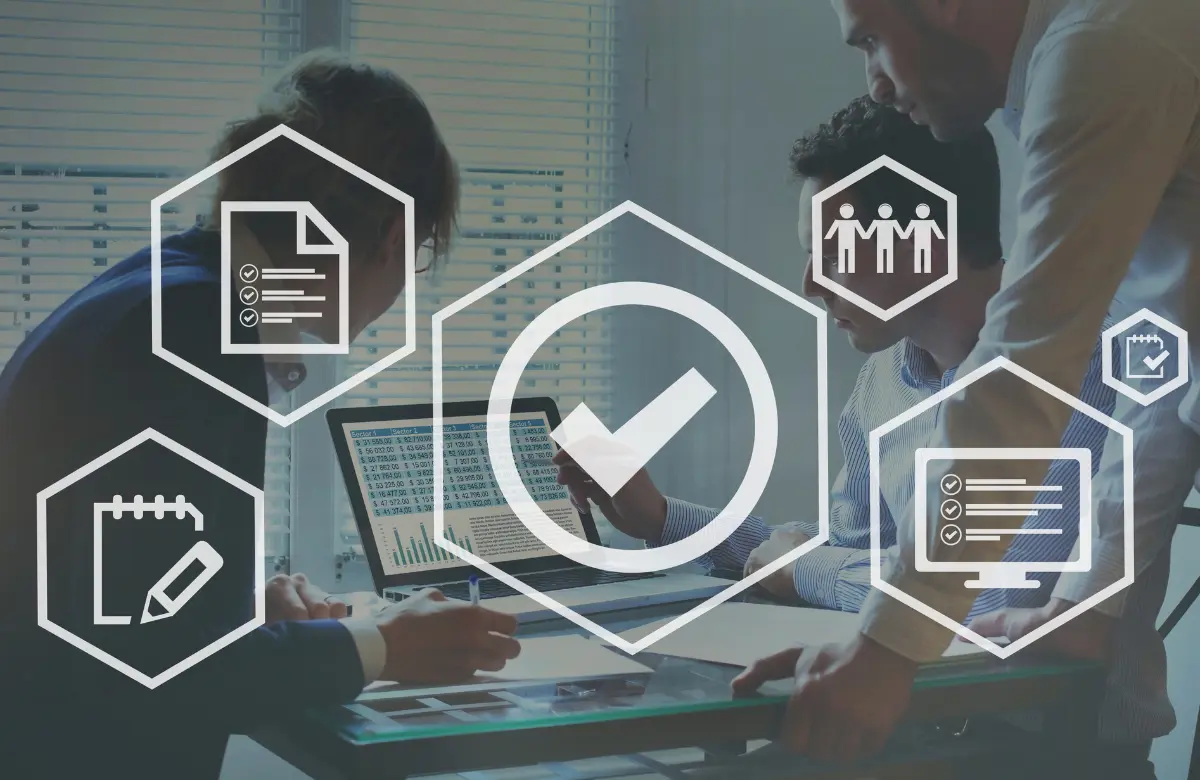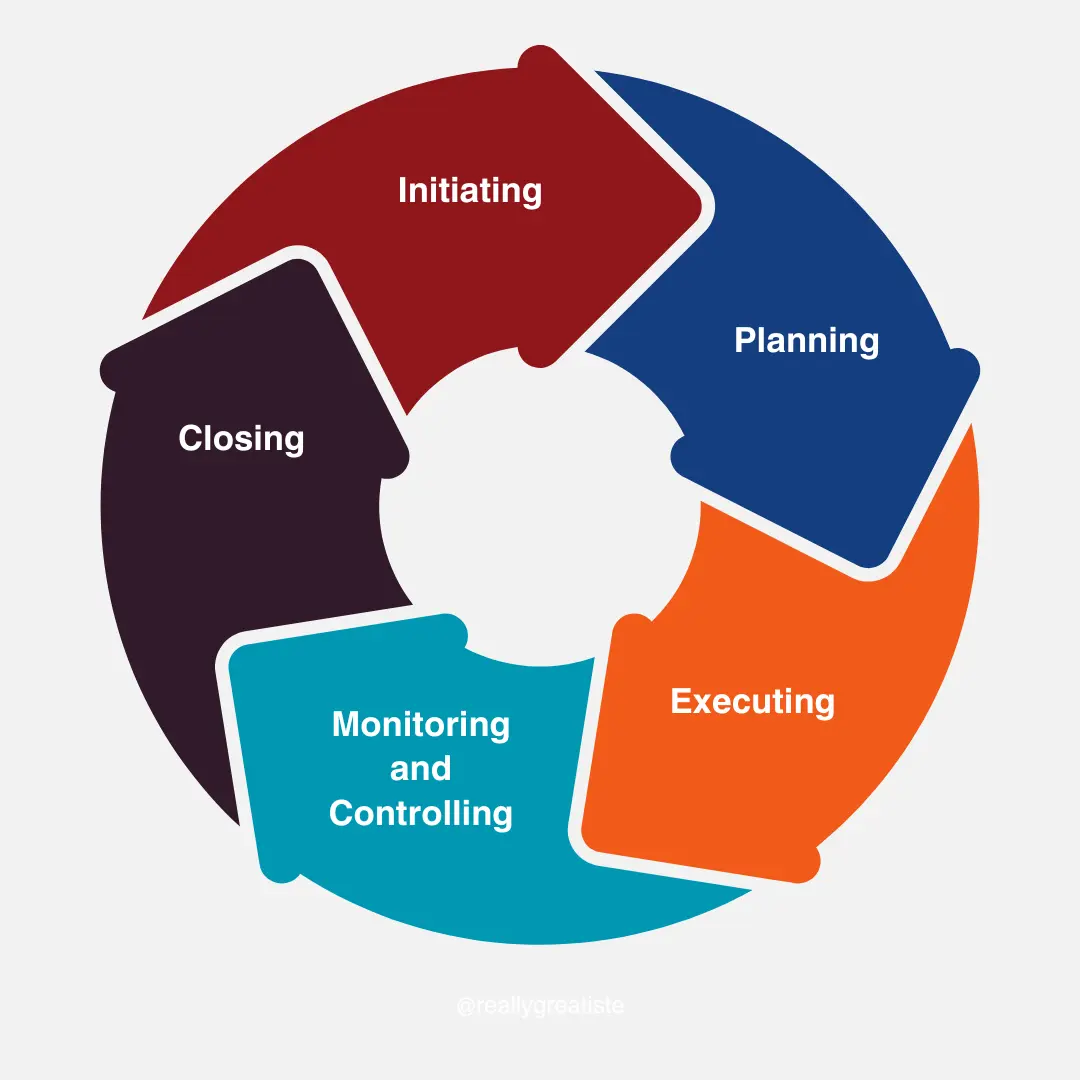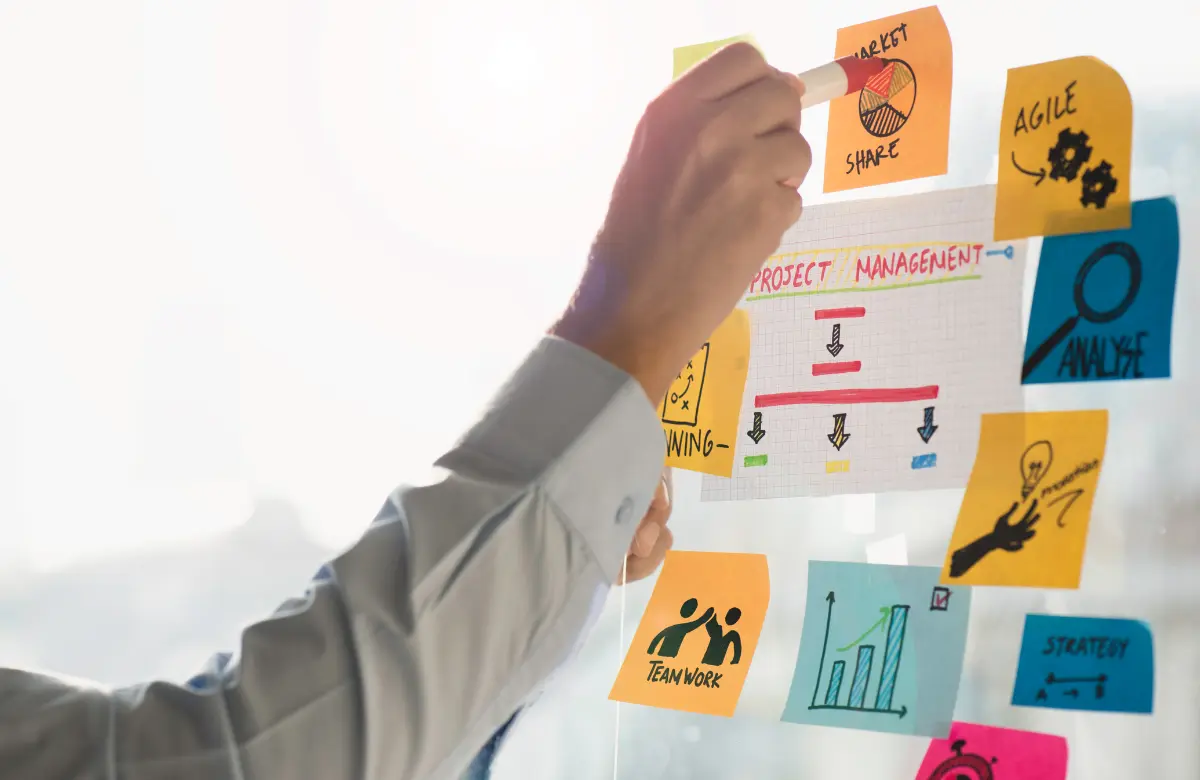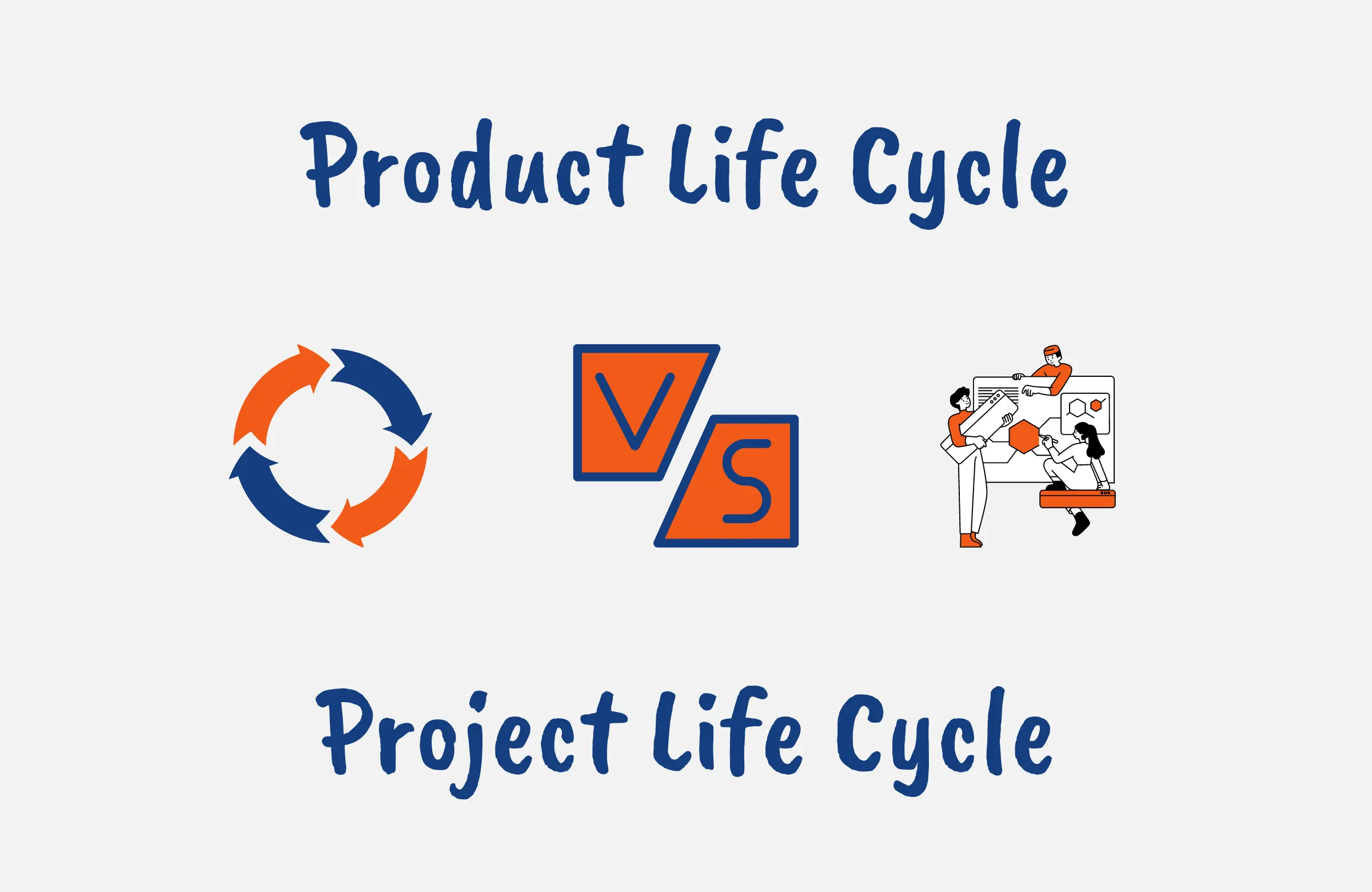The product life cycle and project life cycle are two key concepts that impact product development and project delivery.
While there’s a common misconception that they can be used interchangeably, they happen to have distinct definitions and applications that impact development, and as a project manager, it’s important to fully understand their differences.
In this article, we’ll compare the product life cycle vs project life cycle comparing their phases, characteristics, and roles in project management.
If you are preparing for the PMP certification exam, an understanding of this topic is important as you can expect a few questions from here.
Difference Between the Product Life Cycle and Project Life Cycle
Bottomline Upfront: The product life cycle refers to the various stages through which a product goes from conception to its removal from the market.
The project life cycle, on the other hand, describes the phases a project passes through from initiation to completion.
Unlike the project life cycle which has a defined beginning and endpoint, the product life cycle continues indefinitely until the product developed from the project ceases to exist on the market.

What is the Product Life Cycle in Project Management?
Like humans, products have a life cycle that details their journey from birth to death. The product life cycle (PLC) refers to the stages a new product goes through in the marketplace, from initial launch to final retirement.
The product life cycle is typically comprised of five high-level stages which are development, introduction, growth, maturity, and decline.
It’s important to note that some organizations use four stages combining the first two stages into one stage which is the introduction.
The duration of each stage and the strategies adopted there vary by product and organization.
By using analysis of performance metrics at each stage, organizations gain insights to inform strategic decisions to optimize the product life cycle.

Product Life Cycle Stages
As earlier iterated, the five stages of the product life cycle are:
1. Development
The development stage starts when an organization first conceives of a new product concept.
In this stage, the focus is on researching the market opportunity, analyzing feasibility, and designing the offering.
Most of the resources invested at this stage are for R&D and testing early product prototypes.
However, this is more of a testing stage and many ideas never make it past development due to factors ranging from high costs to unviable business models.
2. Introduction
Once developed, the product enters the introduction phase when it is first launched to customers.
It is in this stage that customers get to know about the new product and it typically sees low sales.
Here, organizations are focused on promoting awareness through advertising and distribution.
Marketing is limited to awareness campaigns due to the small customer base and profits are negative as costs are high and sales are low initially.
3. Growth
In the growth phase, sales experience rapid exponential increase as the product gains acceptance.
New market segments are targeted to expand the customer base and competition may emerge.
While marketing costs are bound to rise in this phase, this is offset by increasing profits. Also, manufacturing capacity is expanded to meet growing demand.
4. Maturity
The maturity phase indicates widespread adoption of the product. At this point, sales growth slows and eventually stabilizes. Economies of scale are achieved to decrease production costs.
The primary focus shifts from gaining new customers to maintaining market share in the face of competition. Strategies such as modernizing the product may be adopted to prolong this stage of the product life cycle.
5. Decline
As customer preferences inevitably shift, sales start to dip during the decline phase. Profits shrink or become negative as a diminishing customer base leads to higher unit costs.
Eventually, the product is phased out unless revitalization strategies are employed, and the organization diverts resources away from the declining product toward new opportunities.
Characteristics of the Product Life Cycle
Each stage of the product life cycle (PLC) has distinct characteristics and business implications.
By understanding these unique features, companies can anticipate upcoming challenges and capitalize on phase-specific opportunities over a product’s entire life.
- The introduction phase sees limited sales, negative profits, and high costs associated with the product launch. Here, marketing is focused on building product awareness.
- The growth phase is marked by rapidly increasing sales and revenues. New customer segments are targeted as the product gains mainstream adoption.
- At maturity, sales growth levels off as the total addressable market reaches saturation. Market share defense becomes a priority in the face of competition.
- The decline phase is characterized by falling sales volumes and shrinking profits as customers move to alternative offerings. The product may eventually be discontinued.
- The duration of each phase varies significantly by product type. While some remain in maturity indefinitely, others decline quickly.
- Most costs, time, and effort occur in the earlier phases, while profits accumulate later.
- Marketing, manufacturing, financing, and development strategies must adapt to the changing conditions at each stage.
- Organizations conduct PLC analysis to inform strategies tailored to the current life cycle position.
- New products and brand extensions can prolong maturity or reverse decline.

What is the Project Life Cycle?
The project life cycle provides a framework for managing the stages that a project goes through from its initiation to closure to deliver a product or service. It outlines the major phases that define the end-to-end project.
The standard project life cycle consists of five high-level phases: initiating, planning, executing, monitoring and controlling, and closing.
Each phase has unique goals, activities, and resource needs that must be coordinated for on-time, and on-budget delivery.
While these provide a high-level framework, the project life cycle can be customized by defining detailed stages, gates, and milestones specific to the project and organization with governance processes tied to the phase transitions.

Project Life Cycle Phases
Now that we know the phases of the project life cycle phases, let’s delve into them individually.
1. Initiation Phase
The initiation phase launches the project by defining its purpose and scope. Key activities in this phase include:
- Drafting the project charter
- Conducting stakeholder analysis
- Preparing the preliminary scope statement
- Selecting the project manager
- Securing project sponsorship
Deliverables from this phase include the final project charter, stakeholder register, and preliminary scope statement.
2. Planning Phase
The planning phase is often the longest phase of the project life cycle and it fully defines all aspects of how the project is going to be planned, executed, monitored, controlled, and closed.
The key activities here include:
- Finalizing the project scope
- Creating the project schedule
- Estimating project costs and budget
- Assembling the project team
- Documenting risks, assumptions, and constraints
- Developing communication and change management plans
Every knowledge area is planned for in this phase, and the key outputs are the project management plan and baseline project documents.
3. Executing Phase
The executing phase focuses on performing the project work as planned. Key activities here include:
- Holding the project kickoff meeting
- Executing tasks per the schedule
- Monitoring risks and issues
- Managing changes
- Communicating with stakeholders
- Managing vendors and contracts
The outputs of this phase are products, services, and project deliverables.
4. Monitoring and Controlling Phase
The monitoring and controlling phase involves ongoing oversight to track project performance for variance from the plan, and correct as required.
Its key activities include:
- Monitoring the project scope, schedule, and costs for conformance
- Updating project plans as needed
- Managing changes to the baselines
- Ensuring quality standards
- Controlling risks and issues
- Reporting project progress to the stakeholders
Project management is all about proactivity. By constantly monitoring the project’s progress, variants are sighted on time, and adjustments can be made to steer the project back on track when deviations occur.
5. Closing Phase
This is the final phase of the project life cycle when deliverables have been completed and the project is handed over.
The key activities here include:
- Conducting post-implementation review
- Documenting lessons learned
- Archiving records
- Releasing resources
- Celebrating team success
Characteristics of the Project Life Cycle
Likewise, the project life cycle has its unique traits and implications at each phase which should be managed accordingly to deliver a quality product or output.
- The initiation phase sees high uncertainty as the scope is loosely defined. The project risks and changes are greatest here.
- The planning phase requires heavy effort but the project spending remains low during this design stage.
- The execution phase consumes the bulk of project resources, budget, and schedule as this is where the deliverables are produced.
- The monitoring and controlling phase covers the entire project life cycle to track variances. For variances, corrective actions need to be initiated to get the project back on track.
- Closure procedures transition the product to the client and transfer knowledge for sustainment.
- Project activities, staffing levels, and costs all vary by phase. Planning must account for the needs of each stage.
- Governance is tied to phase gates and milestones to ensure quality before advancing.
- Requirements are progressively elaborated through the phases as unknowns are resolved.
- Learning from early phases gets applied to later phases to improve performance.
- Changes are easier to implement in the initial phases compared to later phases.
- Each phase depends on the successful completion of the previous ones.
Product Life Cycle vs Project Life Cycle: Feature Comparison
Let’s do a head-to-head comparison of the product life cycle and project life cycle for further clarity on their distinctions.
1. Duration
The product life cycle represents the entire lifespan of a product which can cover a period of many years.
The project life cycle on the other hand has a defined start and end date, typically lasting weeks, months, or a few years at most for a mega-project.
2. Phases
The product life cycle has sequential phases that do not repeat or overlap from development, introduction, growth, and maturity, to decline.
With the project life cycle, the phases which are initiation, planning, execution, monitoring and controlling, and closure may overlap. The monitoring and controlling phase in particular is done alongside the other phases.
3. Market Focus
The product life cycle is conceptual and depends on market conditions and the product sales life cycle.
While the project lifecycle is defined by tangible project requirements and deliverables outlined during planning.
4. Adaptability
The product life cycle phases are general frameworks that must adapt to each product’s unique needs, while the project lifecycles follow a prescribed path outlined in the project plan.
5. Boundaries
The product life cycle relates to a product’s market viability over time, while the project lifecycle focuses on the internal execution of project activities and deliverables.
6. Strategies
Product life cycle strategies align business decisions with the market position: pricing, promotion, and enhancements.
In contrast, project life cycle strategies focus on optimizing project execution via scheduling, resource allocation, and budgeting.
7. Scope
The product life cycle applies to an entire product line or brand, while the project lifecycle is specific to creating a unique product, service, or result.

Product Life Cycle vs Project Life Cycle Examples
Next, let’s look at some examples of these life cycles work in practice.
Product Life Cycle Example
For context, let’s look at an example of a product life cycle for a hypothetical new smartphone model by a major phone brand.
The smartphone spent several years in development as the company researched features, designed prototypes, and allocated resources to bring it to market.
And to generate a buzz, marketing began promoting the new model ahead of its release date.
In the introduction phase, sales were low as only tech enthusiasts bought the pricey new phone.
Advertising was thus focused on product demos and showcasing unique capabilities like the hologram projector, and minimal profit was made as the cost to produce each unit was high.
As positive reviews spread, sales accelerated in the growth phase. Marketing expanded to new customer segments like business professionals.
In a bid to meet the growing demand, manufacturing capacity was scaled up and the revenue and profitability rose dramatically.
Within 2 years, the phone hit maturity with widespread adoption and sales flattening out. Then the focus shifted to releasing a 2.0 version to extend its life cycle.
After 4 more years, competitors offered superior options, and the phone sales declined as it entered the decline phase.
The company decided to discontinue the smartphone line and shift resources toward its new wearable technology products.
This example illustrates how this smartphone model followed the classic product life cycle pattern from development to decline over a decade-long lifespan.
Project Life Cycle Example
Let’s look at the project life cycle of a software development end-to-end project.
The life cycle starts off with the initiation phase where a project charter was drafted to create a new customer management system for an IT Company. The key stakeholders and project sponsors were identified here.
After the formal approval of the project, it moved to the planning phase where the project manager consulted the stakeholders to detail the system requirements.
In this phase, the deliverables, resource needs, schedules, costs, scope, and communications plans were established.
During execution, the developers began coding software components based on the plans while the project manager oversaw development activities and managed risks and changes using change control processes. The project progress was reported to sponsors weekly.
As part of the monitoring and controlling, the project manager in collaboration with the project team tracked schedule and budget variances.
When issues emerged, such as a key developer leaving, plans were adjusted after analyzing impacts.
And then in the closing phase, the completed software was transitioned to the operations team which would maintain it.
The vendors were paid and resources were released. Lessons learned were documented to aid future projects.
This example demonstrates a typical software project progressing through the five project life cycle phases to successfully deliver a final product.

Relationship Between Product Life Cycle and Project Life Cycle
Despite these differences, the product life cycle and project life cycle happen to be very interrelated.
Generally, projects are undertaken to create products and services, and by aligning project activities with the current product life cycle phase, companies can optimize new product development.
The initiation and planning stages of the project life cycle often occur during the product life cycle development or introduction stages.
Then research, requirements gathering, budgeting, and vendor selection support designing and launching the product.
During the product life cycle growth phase, multiple new projects may be executed to improve and expand the product to meet accelerating demand.
These projects focus on enhancements like adding features, integrating new technologies, or expanding to new markets.
In the maturity phase, project work transitions to maintenance and support. Smaller projects refine and optimize the product and upgrades or redesigns may be undertaken to prolong maturity before decline sets in.
As sales slow in the product life cycle decline phase, project resources are gradually redirected away from the fading product towards new product development instead. The cycle then continues.
Effective PLC and project life cycle alignment improves new product success by:
- Ensuring projects have the necessary strategic context
- Focusing resources on the most impactful activities
- Maximizing returns on project investments
- Accelerating time-to-market
- Optimizing the project portfolio mix across the product life cycle
With strategic alignment between project and product lifecycles, companies can translate market insights into executed product strategy through disciplined project delivery.
The product life cycle determines what projects need doing while the project life cycle governs how they get done.
Product Life Cycle (PLC) Analysis
PLC analysis refers to evaluating a product’s performance through each stage of its life cycle to inform strategic decisions.
By examining key metrics at each phase, companies gain insights into how to maximize opportunities and combat challenges.
During the introduction phase, PLC analysis tracks early sales volumes, customer response, and awareness levels to determine if more aggressive promotional efforts are needed or if the product should be discontinued.
In growth, sales momentum, customer demographics, competitive actions, and profitability are assessed to guide decisions on pricing, targeting, distribution, and operational scalability.
At maturity, market share, customer retention, repurchase rates, and cost structure are analyzed to develop strategies for defending against rivals, optimizing economies of scale, and extending the profitable lifecycle.
For declining products, contribution margin, brand equity, and residual opportunities are evaluated to determine whether to revitalize, phase out, or discontinue the offering.
Ongoing PLC analysis enables:
- Tailored marketing mix and budgeting at each stage
- Operational forecasting and capacity planning
- Resource allocation to the products with the highest potential
- Timing of new product introductions and extensions
- Maximizing ROI over the entire lifecycle
With regular PLC analysis, companies can ensure strategies keep pace with evolving product needs across the entire cycle using data-driven insights to guide effective decision-making rather than relying on just intuition.

Product Life Cycle (PLC) Strategy
At each stage of the product life cycle (PLC), companies employ different strategies to capitalize on opportunities and overcome challenges.
By aligning business decisions with the current life cycle phase, firms can enhance performance.
During the introduction phase, strategies aim to spur product trials and build awareness.
Introductory pricing and promotional offers are used to attract early adopters and distribution focuses on channels serving innovators.
When growth takes off, brands expand to wider audiences through mass marketing, and manufacturing capacity scales up to meet demand. Market share is grown by converting new customers before rivals.
At maturity, the priority becomes defending market position and maximizing profit, hence marketing reinforces brand loyalty among existing buyers rather than chasing new ones.
Incremental updates maintain appeal while economies of scale reduce production costs.
For declining products, companies may pursue retrenchment by streamlining operations to milk remaining revenue, or revitalization through reinventing elements of the marketing mix. Eventually, end-of-life strategies will phase out unprofitable offerings.
PLC strategies require cross-functional coordination across business units like:
- Marketing: Pricing, promotion, targeting
- Manufacturing: Capacity, forecasting, inventory
- Product Development: Enhancements, next-gen offerings
- Finance: Budgeting, cost management
With integrated PLC strategies, companies can optimize the customer value equation at every point in the product life cycle.
Conclusion
Despite having distinct processes and purposes, project and product life cycles must be integrated to turn product strategy into executed reality.
This enables aligning development initiatives to the current market needs of the product lifecycle.
Through effective collaboration between project managers and product teams, it is highly possible to leverage the complementary strengths of these business concepts to drive new product success.
FAQs
What is the Difference Between a Product and a Project?
A product is an outcome, either tangible, like a car, or intangible, like a software application, typically created for sale or use.
A project is a temporary endeavor with a defined start and end, intended to create a unique product or result.
While a product is persistent and might evolve over time, a project is transient, with specific goals, timelines, and resources allocated to achieve its objectives.
How Long Should a Product Life Cycle Be?
The length of a product life cycle has no fixed length and varies significantly depending on the product and market dynamics.
It could range from months for perishable goods or trendy items, to several years or decades for durable goods or evergreen services.
How do You Extend a Product Life Cycle?
To extend a product life cycle, consider strategies like product innovation, exploring new markets, rebranding, introducing new features, or adjusting pricing.
Effective marketing and customer engagement can also prolong product relevance, ensuring it remains appealing and functional for its target audience.





